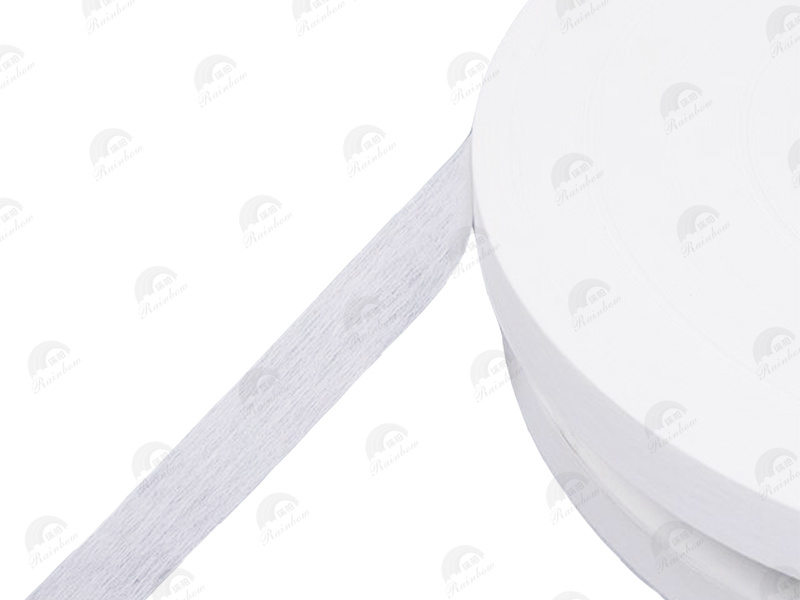The Comprehensive Guide to the Benefits of Using Soft Handfeel Fusible Interlining in Fashion Design
Release time:
2025-06-01
The Comprehensive Guide to the Benefits of Using Soft Handfeel Fusible Interlining in Fashion Design
In the world of fashion design, the choices we make about materials can significantly impact the aesthetic and functional qualities of our garments. One integral component that is often overlooked is fusible interlining, particularly the soft handfeel fusible interlining. This remarkable textile not only adds structure to clothing but also enhances comfort and style, making it a popular choice among designers. In this article, we will delve into the multifaceted benefits of using soft handfeel fusible interlining in fashion design.
Table of Contents
- Understanding Fusible Interlining: What You Need to Know
- The Many Benefits of Soft Handfeel Fusible Interlining
- Enhancing Garment Quality with Soft Handfeel Fusible Interlining
- Improving Comfort in Fashion Design
- Design Flexibility and Creative Opportunities
- Application Techniques for Soft Handfeel Fusible Interlining
- Expert Tips for Fashion Designers
- Conclusion: Elevate Your Fashion Creations
- Frequently Asked Questions
Understanding Fusible Interlining: What You Need to Know
Fusible interlining is a type of textile that is bonded to the fabric to provide added support and structure. It typically comprises a layer of fabric coated with an adhesive on one side. When heat is applied, the adhesive melts and bonds the interlining to the main fabric. The soft handfeel fusible interlining stands out due to its unique blend of comfort and functionality, making it an ideal choice for high-quality garments.
Types of Fusible Interlining
There are several types of fusible interlining available in the market, each designed for specific applications. The primary categories include:
- Woven Fusible Interlining: Offers excellent structure and is ideal for tailored garments.
- Knit Fusible Interlining: Provides greater flexibility and is commonly used for stretch fabrics.
- Non-woven Fusible Interlining: Lightweight and versatile, often used in various applications, including casual wear.
The Many Benefits of Soft Handfeel Fusible Interlining
The advantages of utilizing soft handfeel fusible interlining in fashion design are extensive. Here, we explore some of the most impactful benefits:
1. Enhanced Structure Without Compromising Comfort
Soft handfeel fusible interlining provides the necessary structure to garments while maintaining a soft touch. This balance is crucial, especially for fashion-forward designs that require elegance and comfort. The result is a polished look that feels great against the skin.
2. Improved Durability and Longevity
By reinforcing fabrics with fusible interlining, designers can enhance the durability of their garments. The additional layer helps prevent wear and tear, ensuring that clothes withstand the rigors of everyday life. As a result, garments not only look better but also last longer, offering better value for both designers and consumers.
3. Versatile Applications Across Fashion Categories
Soft handfeel fusible interlining is versatile enough to be used in various fashion categories, from high-end couture to everyday wear. It can be applied to blouses, dresses, jackets, and more, making it an indispensable tool in any designer's toolkit.
4. Smooth and Professional Finish
Using fusible interlining results in cleaner seams, sharper lines, and an overall more professional appearance. This is particularly important for pieces that require a high level of craftsmanship. The seamless finish that fusible interlining creates can elevate even the simplest designs.
Enhancing Garment Quality with Soft Handfeel Fusible Interlining
Quality is the cornerstone of successful fashion design. Soft handfeel fusible interlining contributes significantly to overall garment quality in several ways:
1. Reducing Wrinkles and Creases
One of the many advantages of incorporating fusible interlining is its ability to reduce wrinkles and creases. This feature is particularly beneficial for fabrics that tend to sag or lose shape over time. The interlining helps garments maintain their intended structure, ensuring that they look fresh and polished.
2. Better Fit and Shape Retention
Soft handfeel fusible interlining aids in achieving a better fit by providing support where it is most needed. This is particularly beneficial for tailored pieces, where the right structure can make a significant difference in how a garment drapes on the body. The interlining's ability to retain shape over time allows for garments that fit beautifully, wear after wear.
Improving Comfort in Fashion Design
In fashion, comfort is just as crucial as aesthetics. Soft handfeel fusible interlining plays a vital role in enhancing wearer comfort:
1. Soft Texture Against the Skin
The soft handfeel of this interlining ensures that it feels gentle against the skin, making it suitable for a wide range of garments, including those worn close to the body. This comfort factor is particularly important for consumers who prioritize ease of wear in their clothing choices.
2. Temperature Regulation
Some soft handfeel fusible interlinings are designed with temperature-regulating properties, helping to keep the wearer comfortable in various climates. By allowing breathability, these interlinings contribute to a better overall wearing experience.
Design Flexibility and Creative Opportunities
Fashion design is an art, and the right materials can inspire creativity. Soft handfeel fusible interlining offers designers the flexibility to explore new styles:
1. Support for Intricate Designs
For intricate designs that involve layers, ruffles, or unique shapes, soft handfeel fusible interlining provides the necessary support without adding bulk. This feature allows designers to experiment with complex silhouettes while ensuring that the final garment remains elegant.
2. Facilitating Unique Techniques
Designers can use soft handfeel fusible interlining to implement various techniques, such as draping and pleating, effectively. The interlining provides a stable foundation, allowing for more adventurous and innovative design choices.
Application Techniques for Soft Handfeel Fusible Interlining
To fully utilize the benefits of soft handfeel fusible interlining, it is important to understand the proper application techniques:
1. Prepping the Fabric
Before applying fusible interlining, ensure that both the main fabric and the interlining are prepped correctly. This includes washing and pressing the fabric to remove any wrinkles or dirt that could hinder adhesion.
2. Cutting and Aligning
Cut the fusible interlining to the desired shape, ensuring it matches the main fabric's cut. Align it accurately, as this will affect the final appearance of the garment.
3. Heat Application
Follow the manufacturer's instructions for heat application. Typically, you will need a pressing cloth to protect both the fabric and interlining. Apply heat evenly and allow it to cool before moving the fabric to ensure a secure bond.
4. Testing Samples
Always test a sample before fully applying fusible interlining to your final garment. This will help you understand how the interlining interacts with your fabric and ensure the desired outcome.
Expert Tips for Fashion Designers
To maximize the benefits of soft handfeel fusible interlining, consider these expert tips:
1. Choose the Right Interlining for Your Fabric
Not all fusible interlinings are created equal. Select the right type based on the weight, drape, and stretch of your main fabric to achieve the best results.
2. Experiment with Different Weights
Different weights of fusible interlining can create varied effects. Experiment with lighter or heavier interlinings to find the perfect balance for your designs.
3. Keep an Eye on Care Instructions
Consider the care instructions for both the main fabric and the fusible interlining. This is particularly important for garments that will require regular washing.
Conclusion: Elevate Your Fashion Creations
Incorporating soft handfeel fusible interlining into your fashion designs can transform the way garments look and feel. With its ability to enhance structure, improve comfort, and provide creative opportunities, this textile innovation is essential for any designer aiming to create high-quality, fashionable pieces. By understanding the benefits and mastering the application techniques of soft handfeel fusible interlining, you can elevate your designs and meet the demands of modern consumers.
Frequently Asked Questions
1. What is the difference between fusible and non-fusible interlining?
Fusible interlining has an adhesive backing that bonds to the fabric when heat is applied, while non-fusible interlining does not have adhesive properties and must be sewn into the garment.
2. Can I use soft handfeel fusible interlining on delicate fabrics?
Yes, but it is essential to test a small sample first and use the appropriate heat settings to avoid damaging delicate fabrics.
3. How do I choose the right fusible interlining for my project?
Consider the fabric weight, drape, and stretch. Choosing an interlining that complements your main fabric is crucial for achieving the desired results.
4. Is soft handfeel fusible interlining machine washable?
Most soft handfeel fusible interlinings are machine washable, but always check the manufacturer's care instructions for specific details.
5. Can I apply fusible interlining by hand?
While it is possible to apply fusible interlining by hand, using an iron is recommended for a more secure bond and even application.
Soft Handfeel Fusible Interlining
Latest News
Nantong Rainbow Technology Co., Ltd.
Telephone:+86-13587673537
E-mail:chrislc717@163.com
Address: Group 42, Xizansi Village, Xiting Town, Tongzhou District, Nantong City, Jiangsu Province

Copyright©2024 Nantong Rainbow Technology Co., Ltd. | Powered by www.300.cn
Copyright©2024 Nantong Rainbow Technology Co., Ltd.
Powered by www.300.cn



